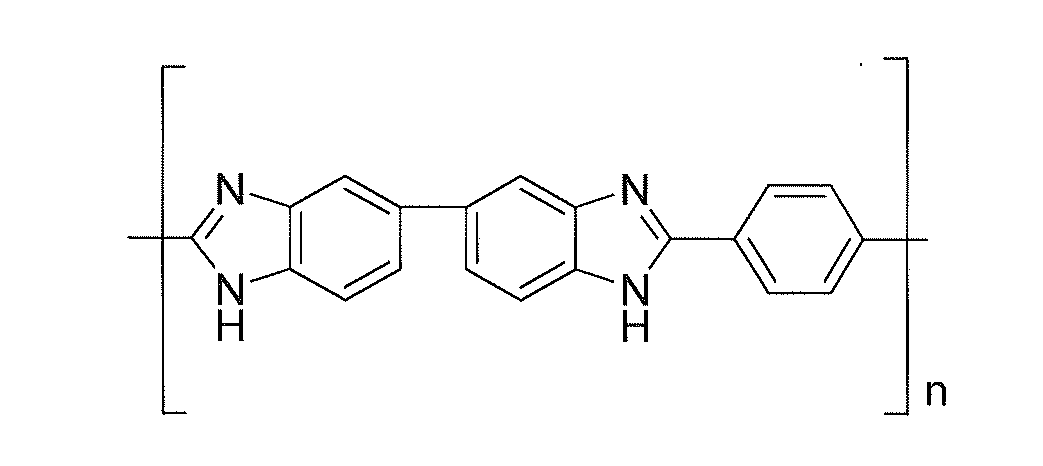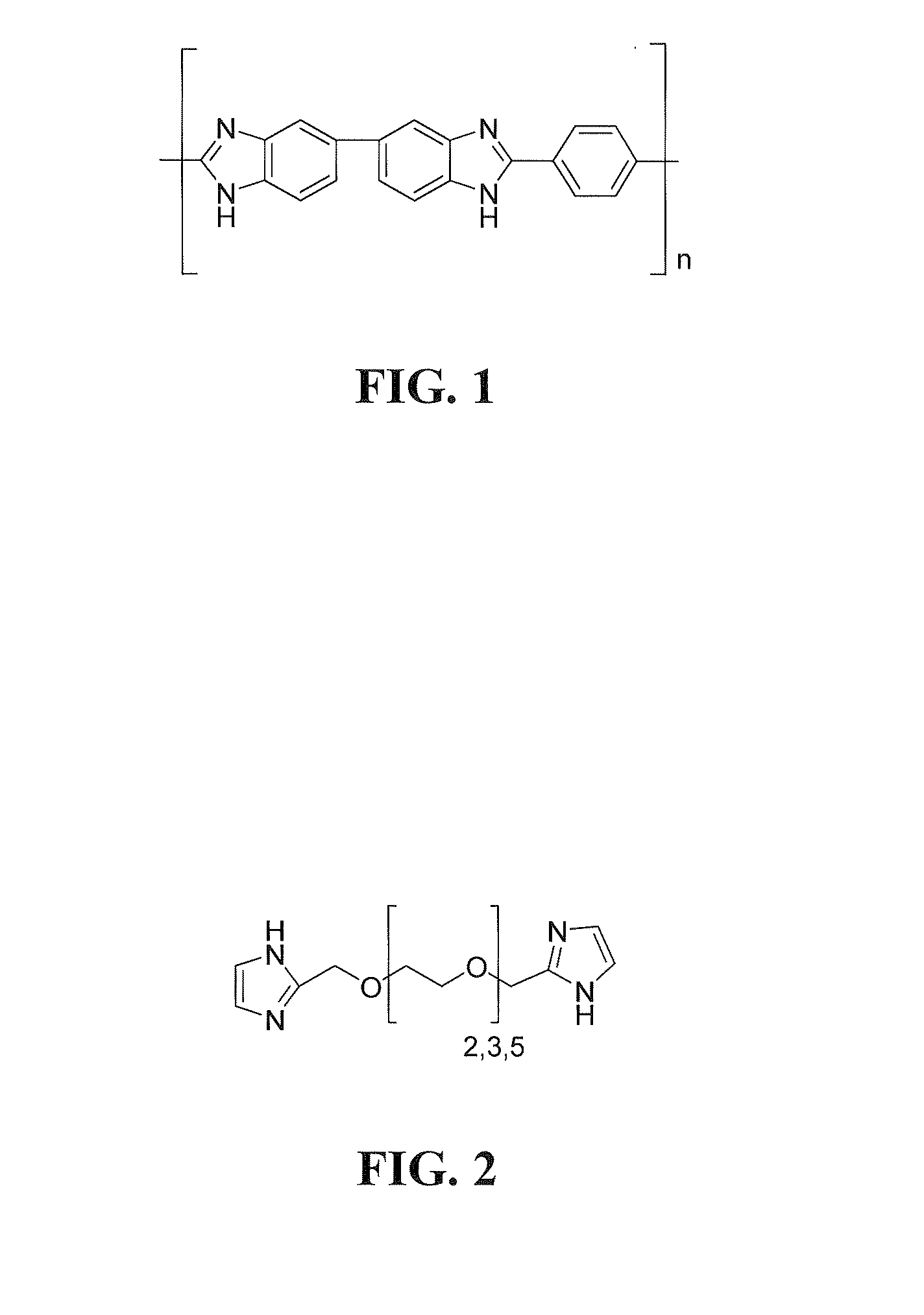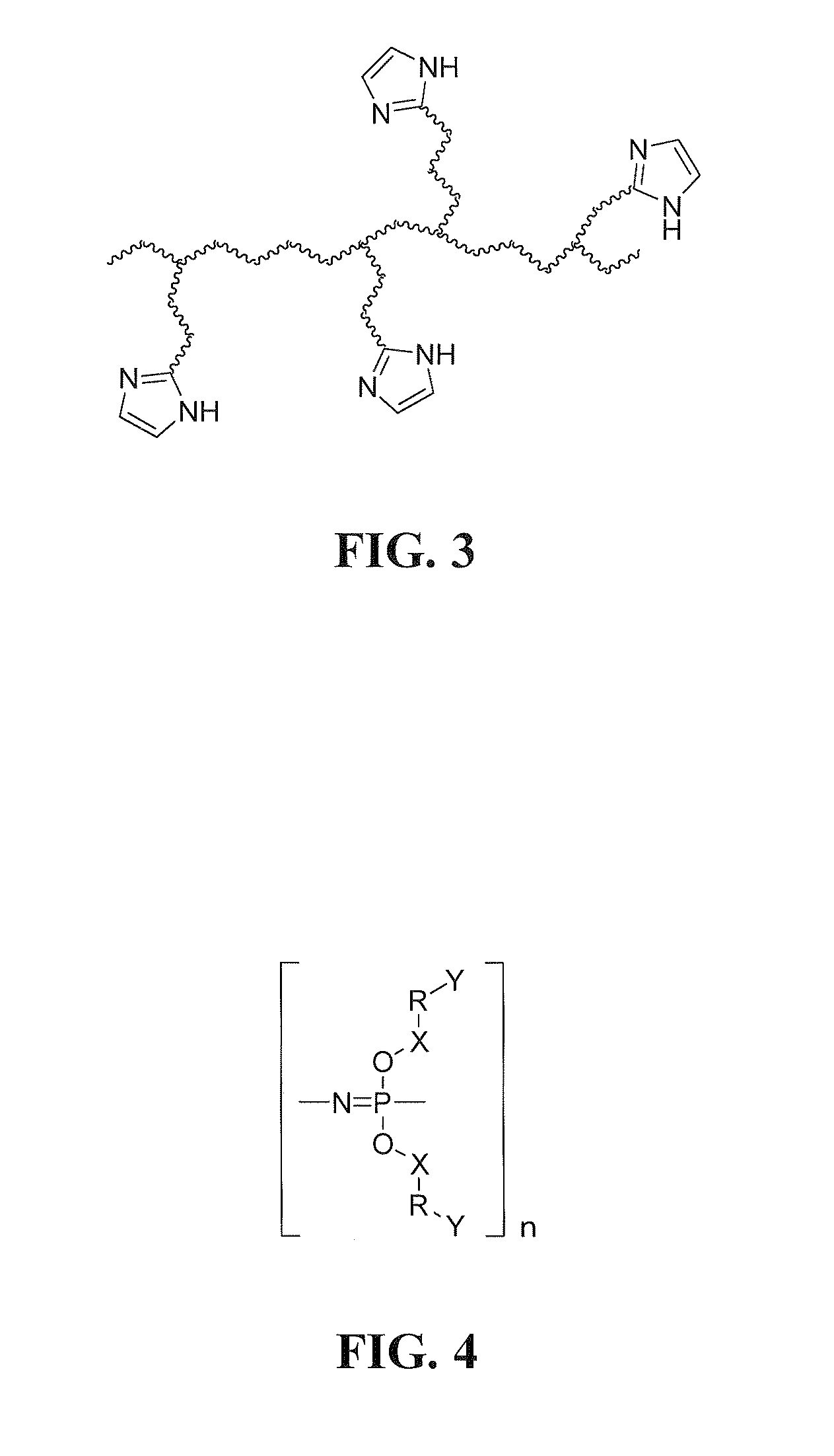Electrolyte membranes and methods of use
a technology of electrolyte and membrane, applied in the field of electrolyte membrane and method of use, can solve the problems of particularly problematic high temperature limitations, and achieve the effects of high operating temperature, high thermal stability, and high thermal stability
- Summary
- Abstract
- Description
- Claims
- Application Information
AI Technical Summary
Benefits of technology
Problems solved by technology
Method used
Image
Examples
examples
Synthesis of hexakis(4-cyanophenoxy)cyclotriphosphazene
[0030]In a 150-mL Schlenk flask, (NPCl2)3 (1.20 g, 3.45 mmol) was dissolved in 30 mL of dry THF. A solution of CNC6H4O−K+ was prepared by adding 4-cyanophenol (2.97 g, 24.93 mmol) to a 150-mL Schlenk flask containing KH (1.00 g, 24.93 mmol) and 70 mL of dry THF. The reaction mixture was heated to 50° C. for 2 hours. The solution of (NPCl2)3 was transferred into the flask containing CNC6H4O−K+ solution using a cannula at room temperature. The mixture was stirred and then refluxed for 72 hours. Filtration of the mixture yielded hexakis(4-cyanophenoxy)cyclotriphosphazene as a white precipitate. The white precipitate was washed with deionized water to remove salts and subsequently dried. Yield: 2.1897 g, 2.59 mmol, 75%. Mp: >230° C.
Synthesis of hexakis(4-tetrazolylphenoxy)cyclotriphosphazene
[0031]In a 100-mL Schlenk flask, (4-cyanophenoxy)cyclotriphosphazene was dissolved in DMF (10 mL) and NaN3 (0.51 g, 7.84 mmol) and NH4Cl (0.38 g...
PUM
| Property | Measurement | Unit |
|---|---|---|
| temperatures | aaaaa | aaaaa |
| temperatures | aaaaa | aaaaa |
| decomposition temperatures | aaaaa | aaaaa |
Abstract
Description
Claims
Application Information
 Login to View More
Login to View More - R&D
- Intellectual Property
- Life Sciences
- Materials
- Tech Scout
- Unparalleled Data Quality
- Higher Quality Content
- 60% Fewer Hallucinations
Browse by: Latest US Patents, China's latest patents, Technical Efficacy Thesaurus, Application Domain, Technology Topic, Popular Technical Reports.
© 2025 PatSnap. All rights reserved.Legal|Privacy policy|Modern Slavery Act Transparency Statement|Sitemap|About US| Contact US: help@patsnap.com



